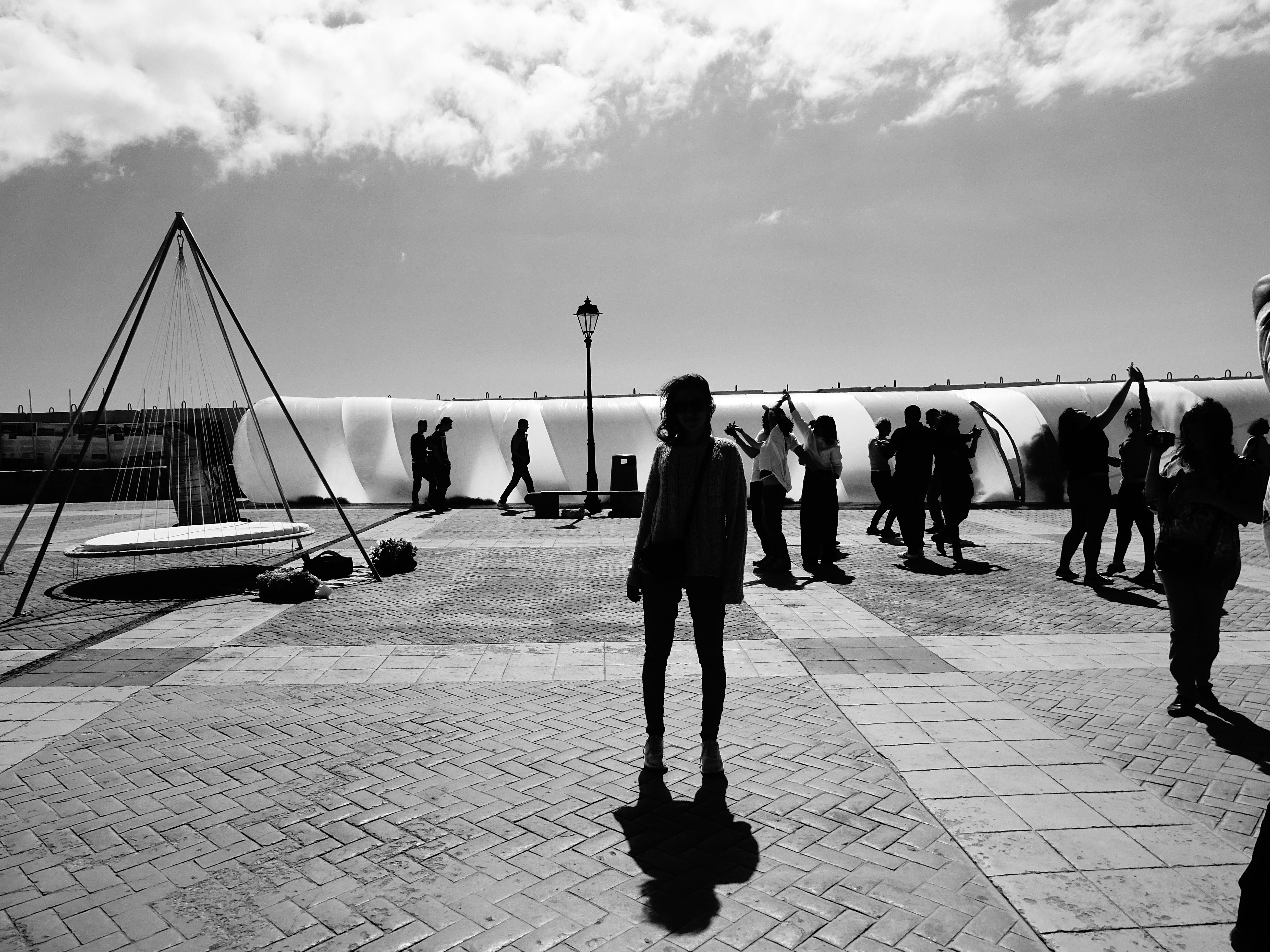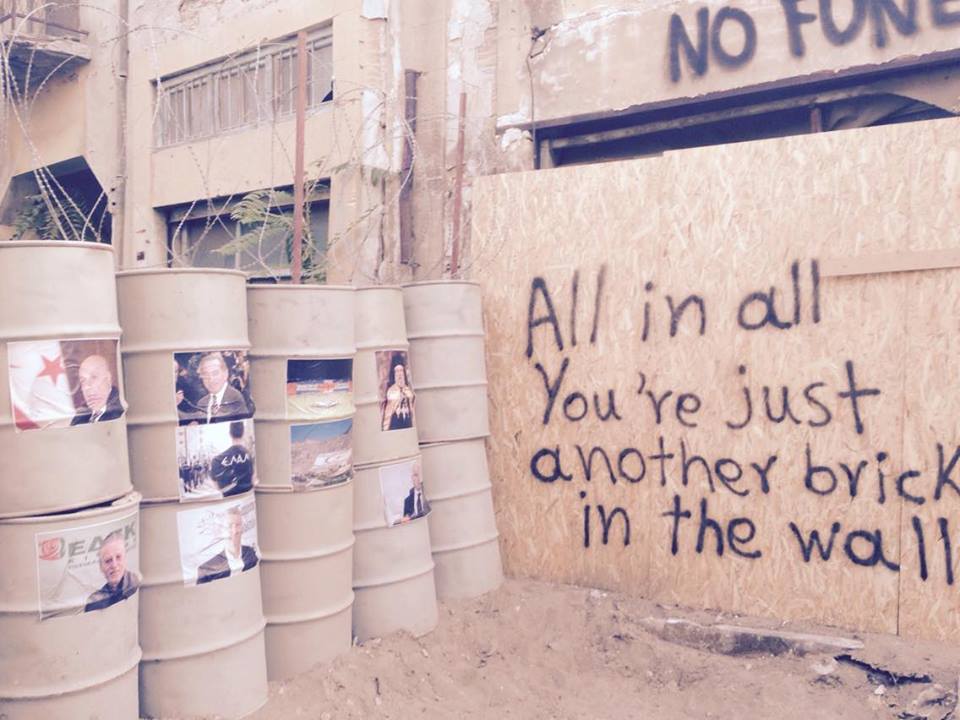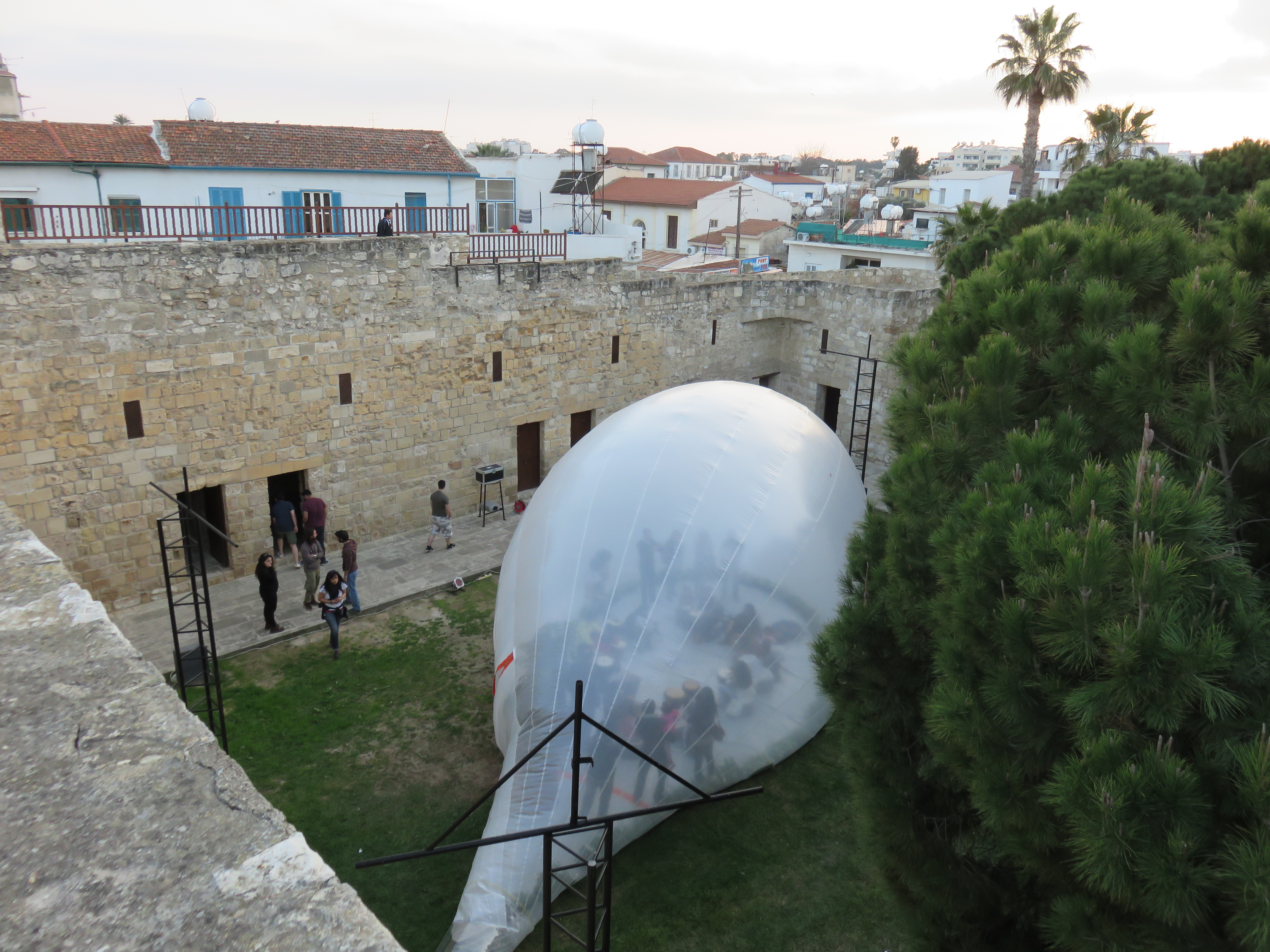
Interview Elena Motisi > Urban Gorillas
Elena Motisi, Urban Gorillas
Elena Motisi: What does the label of “independent” mean for you? Why do you define yourselves in such a way?
Urban Gorillas: Independent for me, is when executed artistic practises are disconnected from any from of pre-defined and specified instructions. Values and form of an independent project arise from a self-driven initiative that seeks for meaning in the way one acts in defence of the public and artistic domain. An independent acts against prejudices arriving from political, economic, religious or social input, and once this liaison is reexamined the independent is able to creatively intervene and generates social impact.
Urban Gorillas envision a creative, a green and a socially engaged city. Being an Independent in this context, we follow objective ideas and beliefs, and include the community to design and implement creative and beneficial practises for the community.
How does the concept of independence intersect with the fields of architecture and urbanism? How does this affect the profession and its projects?
In the field of Architecture you are always dependent upon the needs of the client, therefore the architect acts to satisfy personal desires, often not allowing for the openness of the creative process, as the shaped work is based on a rigid framework of needs.
In urbanism the needs of the client transcend to the needs of the society as a whole. One could be independent creatively, but is interdependent with administrative procedures and the general public. In this sense, we can talk of Interdependence in the field of urbanism, where proposed works and actions should concern a coherent involvement of the stakeholders, public & private sectors and the wider local community. This complex process creates networks of interdependence amongst the above groups and a very challenging context in which we have to work.
Is it possible to talk about non-profit work in your fields of activity?
Yes, Absolutely. Some projects may generate basic income, but others are undertaken from the free will of collaborators and participants. The projects we undertake never leave a profit for the organisation and any funding received is just sufficient to cover the basic costs of running a project. As the central form of our actions involves the regeneration of public spaces, and we often organise such events out of our independent drive for improvement of the urban scene. These events and actions are always open and free for the general public to attend.
Further, national procedures for cultural funding identify take predefined and rigid forms, making funding unattainable as our type of work cannot be categorised into theirs.
In my opinion, emergencies can be a source of inspiration for new architectural projects. Do today’s independents have to come up with new topics for projects of their own accord, relative to the needs arising from the context in which they live? In this respect, identifying one criticism and one opportunity, is it possible to respond with the processes on which self-initiated projects are based? Under what conditions, then, can a “self-commissioned” project exist?
You are absolutely right! Social, political, economic and environmental emergencies are becoming the conditions that which the independent can respond to with creative solutions, but as well as advocating for an improvement, or with a solution of a pressing issue. So in this sense, an independent project is formed, that is relevant and responds to actual societal conditions we are facing in each setting. So the processes and reactions are always linked to the current emergencies raised in a specific context.
In the case of architecture, an architect can be commissioned to a project, but an independent approach could emerge, if for example, he opts to create a socially creative environment, that serves the general public good.
In this sense a self-commissioned project emerges from the independent drive of the architect and the artist to present a solution to the needs of the wider community and persuade clients of the added value of a project in servitude of the general good.
With regards to ways of working: what does working with citizens mean to you? What strategies are available for shared work?
Co-creating with citizens is a required practise that enforces every public action we foresee. Thoughout our projects and actions we look into strategies for participatory democracy techniques to emerge, such as open calls for participation, co-design workshops, co-developing a project and discussions with citizens. Working with citizens might mean hands-on collaborations, but as well as research we undertake in order to understand and analyse their needs. Working with citizens also means working with ALL citizens, and implement actions that will encourage social inclusion.
Citizens will join our actions when the intentions are clear and the nature of collaboration is one when one can learn, share, have fun and also where exchanges with diverse people are initiated.
In my opinion, there are some subjects, such as the emergencies related to migrants (possible solutions for receiving them,…), construction waste and its disposal (alternative uses of the unfinished,…), the critical relationship with territory (urban gardens,…) and the generalised political crisis, which may be considered as the starting point for independent collectives’ planning of activities. What is your opinion? Do you think that the solution to these issues can be found in an institutional context or, rather, outside of it?
I think one can work along the two lines. Solutions and problems should result and arise in-and-out of collaborations of both institutional context and independent actors. Definitely more space should be given to independent/informal groups, as the latter have the advantage to think of solutions that are burden-less of institutional politics and procedures. Furthermore, working with these issues, independent groups working on the grassroots level have the advantage of a hands-on approach and the inclusion of citizens directly affected by the subject. This, more healthy approach, can enrich the diversity of the project.
How much does politics affect your job? Does political pressure represent an incentive or a barrier for independent architects?
We live in a very particular and peculiar setting in divided Nicosia where due to current politics and economic crisis, opportunities for development diminish which is a burden financially and socially. Living in divided communities, we have an increased incentive to work with the ‘other’ community despite administrative barriers on the way.
Do you think there is a connection between those territories characterised by conflict and the presence of independent groups? Can we say that the intensity of the presence of these collectives and of their actions tends to superimpose itself on maps of emergencies and geopolitical imbalances? Is there a relationship between the conditions of conflict in which they work and the way in which architectural planning paradigms change?
In Nicosia, we have seen an intense emergence of independent groups in the last five years, that act in the fields of art, architecture, politics, civic rights, the environment and so on. In the case of Cyprus, such groups have emerged quite late, despite the conflict that is on-going for over 40 years ago. Yet, the emergence of these groups, and vigorous collaborations within groups of the divided communities is definitely leading towards a united hope facing the division.
The spaces in the old city have been continuously changing through the emergence of these collectives where leading to an on-going gentrification process, with growing expensive housing and commercial culture. This conflict over the ‘creative space’ in the city is at the moment secured either by institutions or the private sector. Gentrification has resulted in driving out creative grassroots practices for the promotion of ‘creative industry sector’ and eradication young independent voices for giving space for more café culture (In Faneromeni square).
Talking about strategies, do an unambiguous and independent way of planning, or some guidelines that can act as a tool for a new kind of intervention in line with the needs of the contemporary, exist?
There is no fixed strategy or guidelines for an independent way of planning. Each project sets its own objectives and a strategy is developed around it. A common rule, as we work in public space, which should belong to everyone, we identify and mix with a diverse groups of people, and set forth a participatory approach for regenerating urban spaces.
Which of your projects has represented an effective action within the field of the topics you investigate? Could you briefly describe it?
Our funded project by EEA and Norway grants, the Green Urban lab was designed at the initial phase, which Urban Gorillas was being established. With this project we had the opportunity to design a proposal based on the thematic of participatory democracy in the domain of public spaces, and explore its implementation at a large scale. The proposal addressed local concerns of the economic crisis, top-down urban planning strategies, and the lack of awareness on the use of public spaces as a democratic platform. We have address these issues, by working together with the community to implement a large-scale public festival. Along with direct interventions in public spaces, the project entailed in-depth research on the perception and usage of public spaces, in a structured way where research and design modules were in constant exchange with one another. Similarly smaller scale projects that we implemented, like a creative intervention in the old traditional neighbourhood of Kaimakli and the up-cycling of an abandoned bus were successful installations in public space that succeeded in bringing people together while acclaiming and raising awareness that the right to the city belongs to all citizens.
Working in “crisis” areas results in changes to the timescales for design projects: have you found that there is any relationship between the acceleration of such timescales and the innovativeness of the results?
I think that these current phenomena are leading to the need of fast, creative and effective solutions, which in turn do accelerate the innovation, both in process and output. We have seen a large scale of innovative solutions as a response to the refugee crisis, or the political resistance that took place in Attartuk Square. These immediate responses are absolutely necessary as they grasp the momentum, and are implemented despite lack of organisation. For example, this year for the first time, the northern part of the island has a different time zone of the south. As the Turkish Cypriot media announced this, we have seen an immediate reaction through social media. Yet, in Cyprus we are not faced with immediate ‘crises’, other than the permanent political crisis of the division, which needs persistent planning and strategies.
Are the themes you deal with in your work related to those urgent issues which are inherent in your country and in the territories in which you operate?
Yes, we consider the main theme of our work, that is the reactivation of public spaces a very pressing local issue, as the cultivation and appreciation of public culture is much underestimated. We imagine to see public spaces reinvented creatively by and for the citizens in a way that they can start enjoying into simple acts like city strolling, a local urban culture that is absent. Further, we see public space as an excellent platform for the advocacy of those same pressing issues.
Your group works primarily his own countries. Was this a choice? What are the reasons behind this?
We are a relative new organisation. We were only formed three years ago, and it was to respond to the need of advocacy for public spaces and change the local scene. Initially, this random coincidence of dissimilar people discussing, happened to be in Cyprus at that moment, so we took actions in our own country. Even we have been working at home, we have had several important international networks and collaborations, some particularly stimulating for us like Plastique Fantastique and the New Europe | Cities in Transition Network. We do aspire for such relationships to continue as collaborations beyond borders brings out a great prospect.
What does it mean to be architects, designers and artists in today’s Cyprus ?
You have to be inventive, make collaborations, take risks and move out of your comfort zone. As the current economic crisis is persisting, and living in a ‘regressive’ thinking society, )in relation to its understanding of the arts, environmental and social matters) one has to find new alternative ways to respond to such issues but also be creative and productive. I was exactly in this situation when we founded Urban Gorillas. The limitations of the architecture profession in terms of being imaginative and socially aware, has pushed me into an interdisciplinary way of working and thinking. Becoming socially aware, and initiating interdisciplinary collaborations led to a reconsideration of the values and ethos that the architect holds and owes back to the society.





